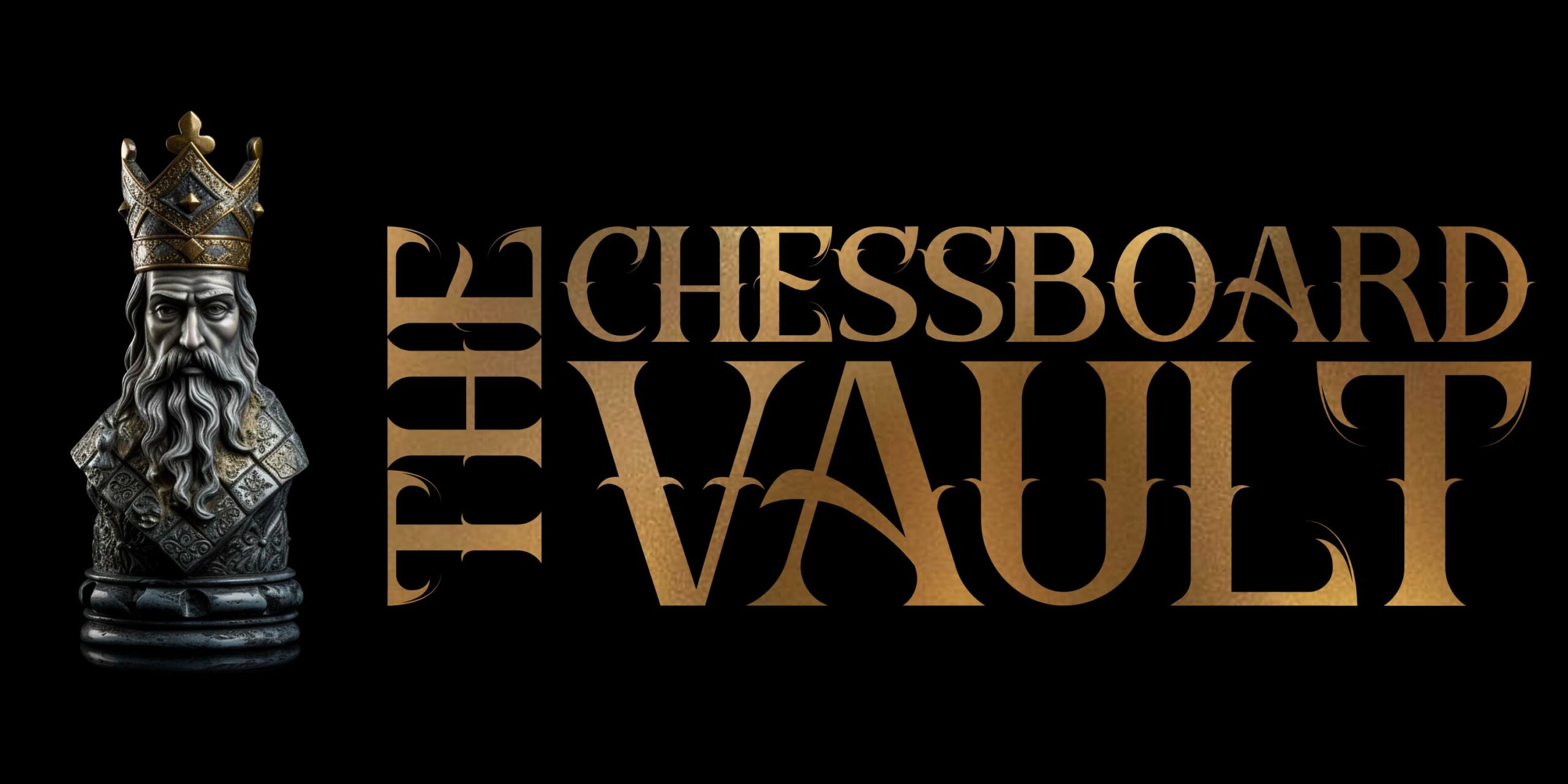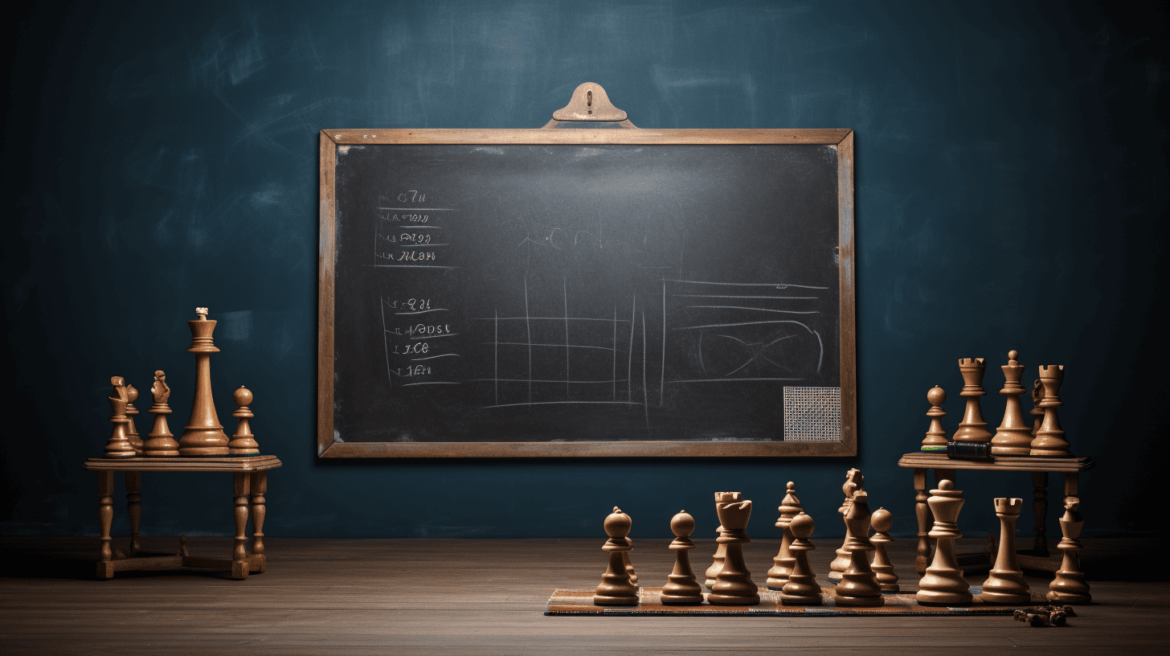Creating a comprehensive Chess Improvement Plan is essential for players looking to enhance their skills and climb the ranks. This plan should cater to various aspects of chess, including tactical skills, strategic understanding, endgame knowledge, and psychological preparation.
Introduction
Embarking on a journey to elevate one’s chess skills demands more than just casual play; it necessitates a structured Chess Improvement Plan that targets all facets of the game. Whether you’re a budding enthusiast or an intermediate player aiming to refine your strategies, understanding the critical role of a well-thought-out improvement plan cannot be overstated. This plan serves as a roadmap, guiding players through the intricate landscape of chess mastery, from sharpening tactical prowess to deepening strategic understanding.
The essence of a Chess Improvement Plan lies in its ability to transform raw potential into polished expertise, offering a tailored approach that aligns with individual strengths and areas needing enhancement. It’s about setting achievable goals, employing the right resources, and committing to a disciplined regimen of study and practice. Moreover, such a plan encourages players to engage in self-reflection, a vital component in identifying weaknesses and tracking progress over time.
In this article, we will delve into the components of an effective Chess Improvement Plan, emphasizing the importance of a holistic approach. By addressing various aspects of the game—tactical skills, strategic insight, opening theory, endgame knowledge, and psychological preparedness—we aim to provide readers with a comprehensive framework for becoming a formidable chess player. Embrace this journey with determination and a keen mind, and witness your chess abilities ascend to new heights.
Understanding Your Current Level
A crucial initial step in any Chess Improvement Plan is a candid assessment of your current playing level. This self-evaluation is foundational, as it determines the starting point from which you will chart your path to chess mastery. Understanding where you stand involves more than just knowing your rating; it requires a deep dive into your games to uncover patterns, strengths, and areas ripe for improvement. Analyzing your game outcomes, whether they are victories, draws, or losses, provides invaluable insights into your tactical choices, strategic planning, and overall decision-making processes.
Incorporating tools such as chess software or online platforms can significantly aid in this analysis, offering detailed assessments of your moves and strategies against optimal play. Additionally, seeking feedback from more experienced players or coaches can shed light on nuances you might have overlooked. This step in your Chess Improvement Plan is not about dwelling on past mistakes but about building a solid foundation for growth. It’s about identifying which aspects of your game need the most attention—be it opening repertoire, middle-game tactics, or endgame strategies—and setting targeted, achievable goals for each.
By accurately understanding your current level, your Chess Improvement Plan becomes significantly more effective. Tailoring your study and practice sessions to address specific weaknesses ensures that your efforts are both focused and fruitful, paving the way for steady progression in your chess journey.
Setting Realistic Goals
In crafting a Chess Improvement Plan, setting realistic goals is a cornerstone for success. This step transcends mere ambition, requiring a thoughtful balance between aspiration and achievable targets. Realistic goals act as milestones in your chess journey, offering clear direction and motivation while preventing feelings of overwhelm and frustration that can accompany overly ambitious objectives. For instance, aiming to increase your chess rating by a certain number of points within a specified timeframe is a tangible goal, as is committing to mastering a new opening strategy over several months.
The art of setting realistic goals within your Chess Improvement Plan involves understanding your time commitments, current skill level, and learning pace. It’s crucial to set both short-term goals, such as improving your performance in specific chess puzzles or scenarios, and long-term goals, like achieving a new ranking in competitive play. These objectives should be SMART: Specific, Measurable, Achievable, Relevant, and Time-bound.
Moreover, your goals should encompass various aspects of chess, from tactical and strategic improvement to enhancing psychological resilience during play. By setting realistic goals, you systematically structure your improvement, making progress measurable and more gratifying. This strategic approach ensures that each step of your Chess Improvement Plan is aligned with your ultimate aim of chess mastery, keeping you focused and motivated throughout your journey.
Fundamental Areas for Improvement
A comprehensive Chess Improvement Plan must address several fundamental areas to foster a player’s overall growth and mastery of the game. These areas represent the core skills and knowledge that every aspiring chess player needs to develop. Firstly, tactical skills are paramount; the ability to spot immediate opportunities and threats on the board is crucial. This includes familiarizing oneself with tactical motifs such as forks, pins, and skewers. Improving in this area requires consistent practice with chess puzzles and tactical exercises.
Strategic understanding is another critical component. It involves the ability to formulate long-term plans based on the position’s structure, piece coordination, and pawn structure. Developing strategic insight helps players control the game and guide it in a direction that favors their position.
Opening preparation is essential in laying down the groundwork for the middle game. A solid Chess Improvement Plan includes studying various openings and understanding the principles behind them, rather than memorizing moves. This knowledge ensures a player can navigate the opening phase with confidence, regardless of the opponent’s moves.
Endgame knowledge is where many games are decided. Understanding key endgame principles, such as king activity, pawn structure, and the importance of piece coordination, can make the difference between a draw and a win.
Lastly, psychological preparation is often overlooked but equally important. Chess is not just a battle on the board but also a mental contest. Developing mental resilience, learning to manage time and stress, and maintaining focus throughout the game are vital skills for any competitive player. Addressing these fundamental areas in a Chess Improvement Plan sets a solid foundation for becoming a proficient chess player.
Tactical Skills
In any Chess Improvement Plan, enhancing tactical skills is often prioritized due to the immediate impact these skills can have on a player’s results. Tactical acumen in chess involves the ability to spot short-term opportunities to gain material, deliver checkmate, or create a more favorable position. It’s about seeing the possibilities that lie within the current arrangement of pieces on the board and executing sequences of moves that capitalize on these opportunities.
Improving tactical skills requires a focused approach, starting with the study of basic tactical motifs such as forks, pins, skewers, discovered attacks, and double checks. Recognizing these patterns quickly and accurately is key to exploiting tactical chances during a game. A robust Chess Improvement Plan includes dedicating time to solve a wide variety of chess puzzles that reinforce these concepts, gradually increasing in complexity as the player’s proficiency improves.
Moreover, reviewing master games and analyzing the tactical decisions made by experienced players can provide valuable insights into the tactical possibilities of different positions. This not only enhances a player’s tactical vision but also embeds a deeper understanding of how tactics fit into broader strategic plans.
Practicing tactics regularly sharpens intuition, enabling players to spot tactical themes instinctively. Incorporating tactics into a Chess Improvement Plan is not just about learning a set of moves but developing a tactical mindset that constantly seeks out opportunities to gain an advantage, making it a critical component of chess strategy and overall improvement.
Strategic Understanding
A Chess Improvement Plan that aims to elevate a player’s game to new heights must include a focus on strategic understanding. This element of chess proficiency goes beyond the immediacy of tactics to encompass the broader vision of the game. Strategic understanding involves recognizing patterns, principles, and concepts that guide the overall planning and execution of moves. It’s about making informed decisions that not only respond to the current state of the board but also anticipate future developments.
Developing a strategic mindset requires a deep dive into various aspects of chess strategy, such as pawn structure, piece activity, control of key squares, and the timing of attacks and defenses. It also involves mastering the art of positional play, where a player aims to improve the positioning of their pieces and pawns to exert long-term pressure on the opponent.
Incorporating study materials such as classic chess books, instructional videos, and annotated master games into your Chess Improvement Plan is crucial for enhancing strategic understanding. These resources can provide insights into the thought processes of grandmasters, revealing how they approach strategic planning in different types of positions.
Practical application is equally important. Playing regular, thoughtful games, preferably with longer time controls, allows for the application of strategic concepts learned in study. Analyzing these games afterward, possibly with the help of a coach or software, helps reinforce strategic understanding and identify areas for improvement.
Strategic understanding is what often distinguishes great players from good ones. A Chess Improvement Plan that emphasizes strategic growth enables players to navigate the complexities of chess with confidence and clarity, laying the groundwork for success in both the middle game and the endgame.
Opening Preparation
Opening preparation is an essential component of any Chess Improvement Plan, setting the stage for the middlegame and influencing the course of the entire game. A well-prepared opening can provide a significant advantage, allowing a player to feel comfortable in the early stages, dictate the game’s pace, and steer it into positions they are familiar with and favor.
To enhance opening preparation, a player should start by selecting a repertoire that suits their style of play. Whether preferring dynamic, tactical battles or slow, strategic warfare, the choice of openings can significantly impact a player’s performance. A balanced Chess Improvement Plan includes studying the main lines and ideas of these openings, understanding the principles behind the moves, rather than rote memorization of move sequences.
Incorporating technology and resources such as chess databases and software is invaluable for keeping up-to-date with the latest trends and innovations in opening theory. Analyzing games by top players who specialize in the chosen openings can provide insights into the nuances of various positions.
Practical application through online and over-the-board games is crucial. Playing the openings in real games tests understanding and adaptability, highlighting areas that need reinforcement or adjustment. Regularly reviewing and updating one’s opening repertoire as part of their Chess Improvement Plan ensures continued growth and preparedness for the challenges of competitive play.

